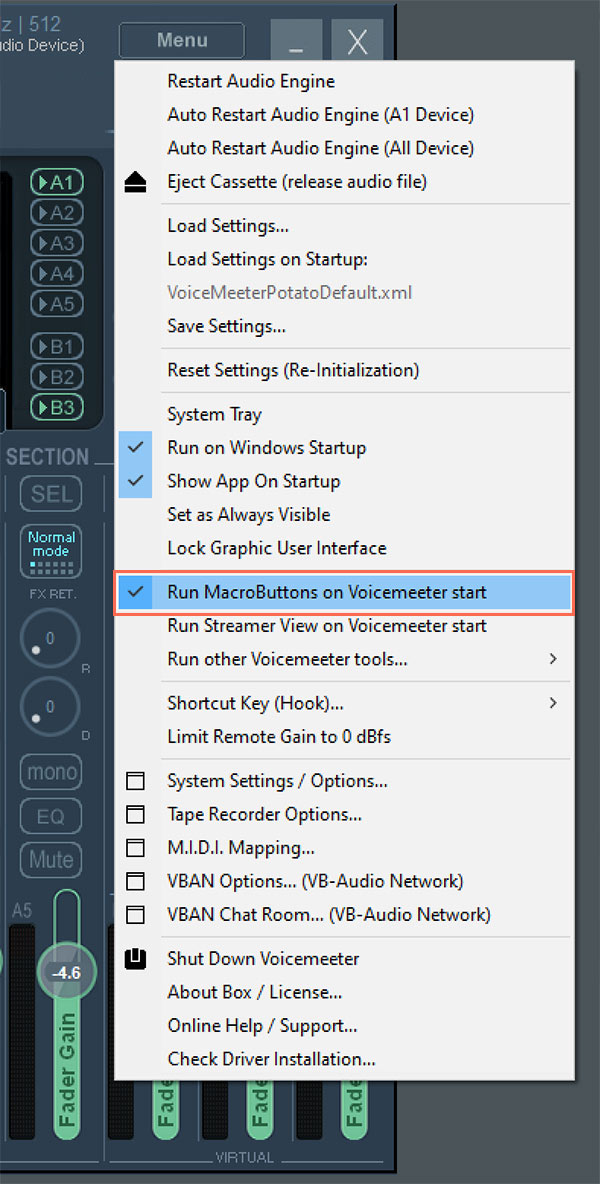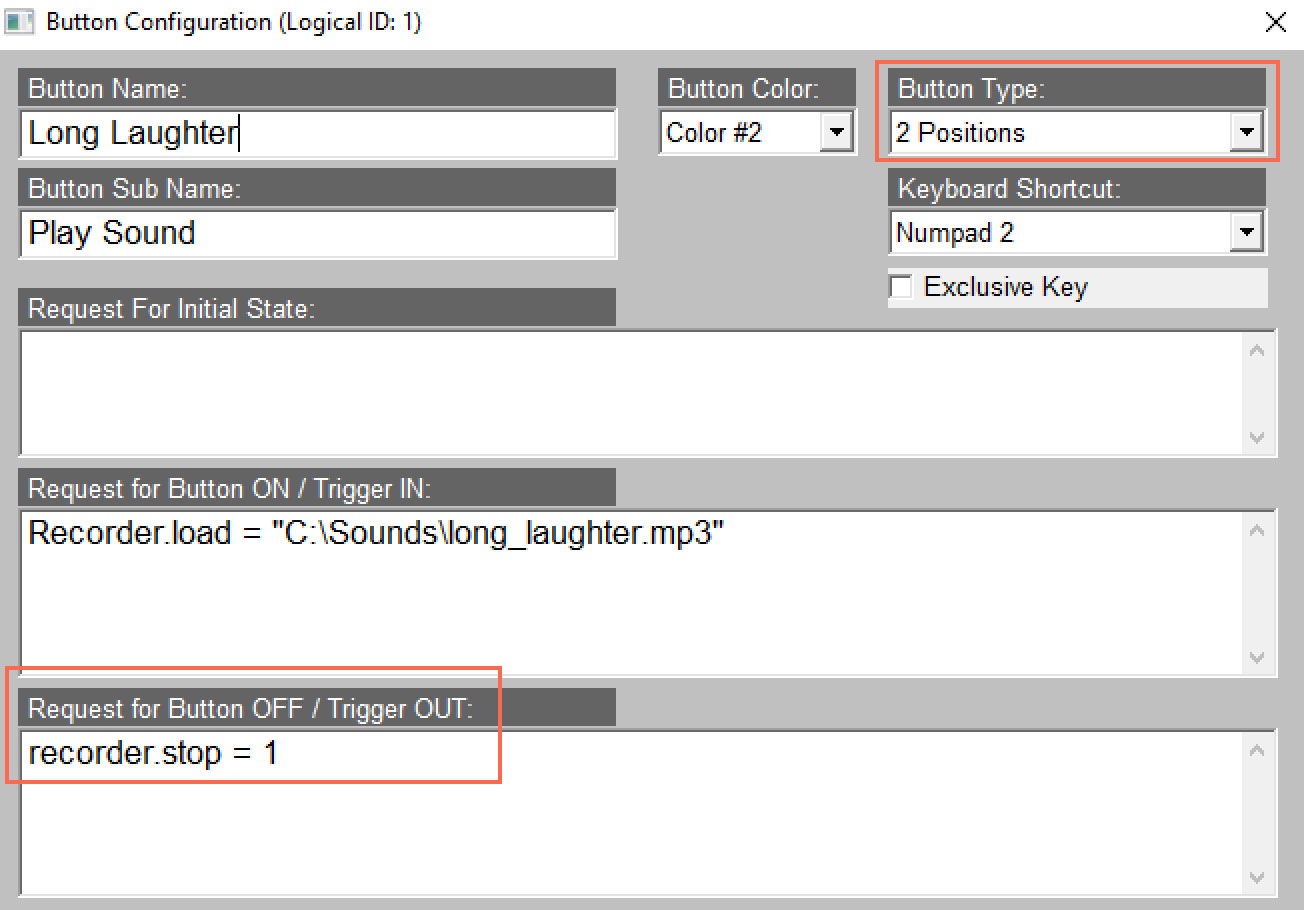Create a Soundboard
with VoiceMeeter’s Macro Buttons
Use the internal Recorder
Trigger intros, outros, commercials, jingles, even complete songs or pre produced content.
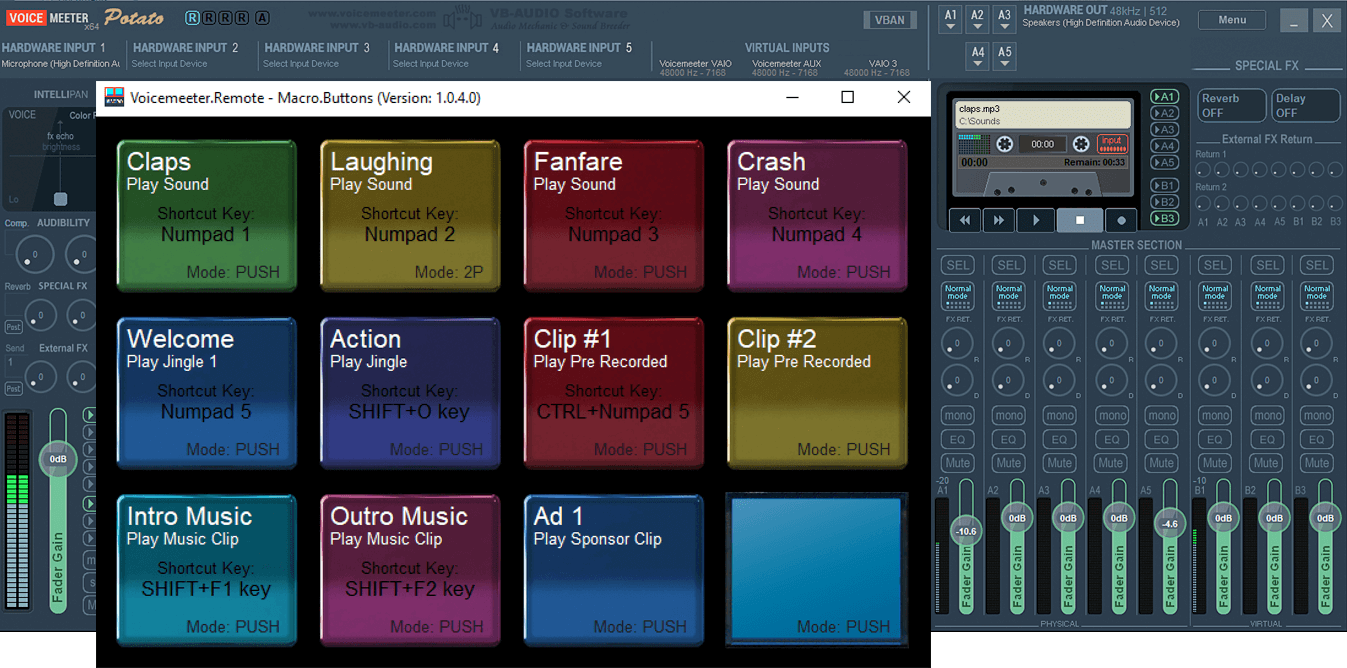
Play your podcast intros, outros, commercials, jingles, even complete songs or pre produced content. Fire sound effects, like claps, laughter, action sounds, fanfares … with a click or keyboard shortcut.
What are Macro Buttons?
The incredible powerful VoiceMeeter Remote.
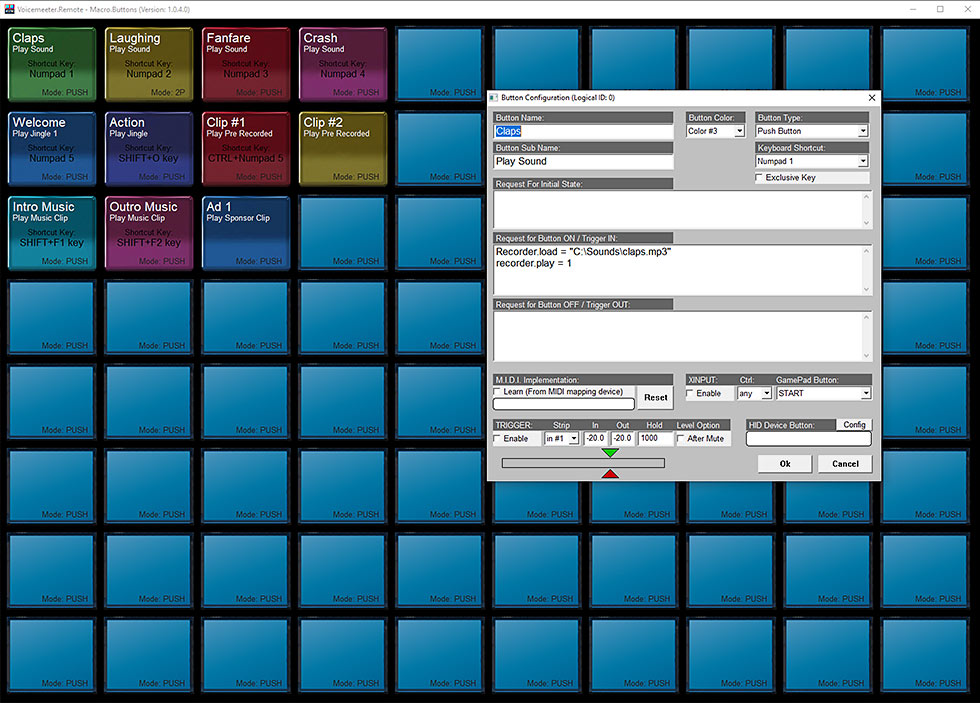
Macro buttons can be configured as simple one-action-push buttons (e. g. increasing the channel volume) or with two positions: on/off (e.g. mute a channel).
Every button can be remote controlled with a keyboard shortcut or mouse button. It is also possible, to use external hardware, like Game pads, MIDI controllers and even Audio Triggers.
This way, VoiceMeeter provides an integrated sound board – for free!
Create a play sound button:
1
Open the Macro Buttons app
You can also enable MacroButton application to open automatically besides VoiceMeeter. In the VoiceMeeter menu select: “MacroButtons run on VoiceMeeter start”.
2
Edit a Macro Button to play a selected sound file
1. Right click the Macro Button, you want to edit.
2. Give the button a name and a sub name
3. Button Type: Push Button
4. Color: button Color (e.g. green)
6. Select a keyboard Shortcut (e.g. Numpad 0)
Now enter the following code in the field “Request for Button ON/Trigger IN:
Recorder.load = “C:\Sounds\clap.mp3”
Enter the correct path to your sound file! Don´t forget the high quotations for the path of your sound file!
3
Does your sound file load and play, if you hit the button?
If not, check your Recorder settings
So if your file is not played, when you press your Macro button, please activate this option:
![]()
If you don´t activate this option, you can add the following code below your Load/Path command in the “Request for Button ON …” field:
recorder.play = 1
Stop a long audio file on a 2nd button click (= Start/Stop)
If you want to play a longer audio file, like a jingle or pre-produced content, but want to be able to stop the sound at any time with a button click (= keyboard shortcut), configure your Macro button like this:
1. Change the button type to 2-Positions button (ON/OFF).
2. Enter the following code in the field “Request for Button OFF/Trigger OUT:
recorder.stop = 1
This will stop the playback of your sound file, when you hit the button or use the assigned keyboard shortcut/MIDI controller button again.
4
Start your sound with a MIDI hardware controller
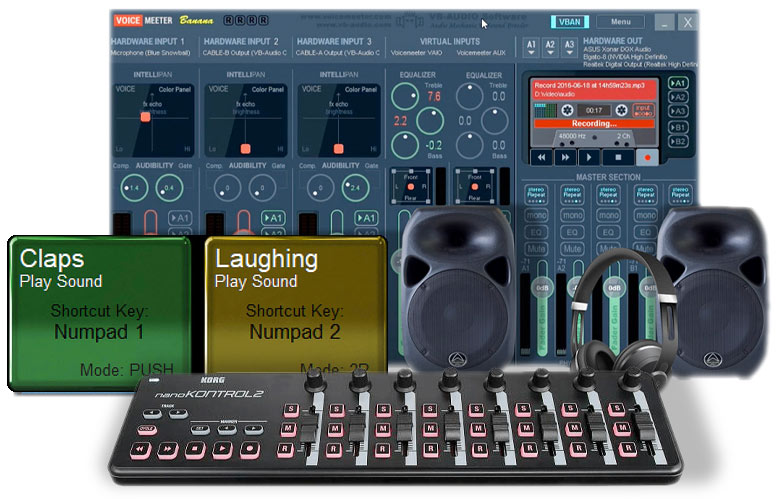
The MacroButton app can use other Human Interface Devices (HUD), especially external MIDI controller commands to control your button and start the sound. VoiceMeeter is expected to work with any MIDI Remote.
Follow these steps:
1. Connect the controller to your computer and check the incoming MIDI message in the hardware control panel of your device (usually installed with the driver). Is it received?
2. Select your MIDI Controller in the M.I.D.I. Mapping dialog (open from the VoiceMeeter menu).
3. Open the Button Configuration dialog: right click of your of your configured sound button.
4. Use the learn MIDI option to receive and store the MIDI message to trigger this button. Check the LEARN box for the incoming message from your MIDI device.
Click on RESET to remove the received MIDI code, if you want to resend/Relearn another MIDI message.
![]()
The MacroButton can also learn MIDI events from an incoming VBAN-MIDI stream.
The MIDI2VBAN application is also installed with VoiceMeeter and converts physical MIDI I/O commands into a VBAN-MIDI Stream.

